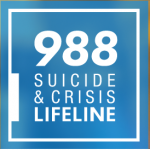Authors of revisions to what is largely considered the “bible” of mental disorders and their diagnoses, called the Diagnostics and Statistical Manual of Mental Disorders (DSM), posted online a first look at what the revisions might actually look like when the full text of the DSM version five, or DSM-5, is published in 2013. Posting of the revisions to the DSM was also covered by The New York Times.
Some important changes include revisions to how bipolar children are diagnosed, as well as the addition of a couple of new diagnoses, “binge eating disorder” and “hypersexuality” disorder.
The American Psychiatric Association posted the proposed changed on the DSM-5 web site, where viewers can submit comments until April 20 of this year. The last version, DSM-4, was published in 1994.
The DSM lays out the primary symptoms of most mental disorders and provides a framework for issuing a diagnosis. Most insurance carriers will not cover treatment for a mental disorder that isn’t included in the DSM, so the book has a lot of influence.
“Anything you put in that book, any little change you make, has huge implications not only for psychiatry but for pharmaceutical marketing, research, for the legal system, for who’s considered to be normal or not, for who’s considered disabled,” Michael First, MD, a professor of psychiatry at Columbia University, told The New York Times. He edited the fourth edition of the manual but is not involved in the fifth.
One key change that responds to criticism of the fourth version is the replacement of a new diagnosis, “temper dysregulation disorder with dysphoria,” for bipolar disorder in children. This change grew out of concerns that many children who did not actually have bipolar disorder were getting classified as bipolar and treated with antipsychotic drugs.
Other changes include the addition of hypersexuality disorder, characterized by excessive fantasies and plans for sexual activity, and binge eating disorder, which is defined as regularly binging on food to the point of discomfort.
Advertisement
Advertisement
Advertisement






Comments
Comments